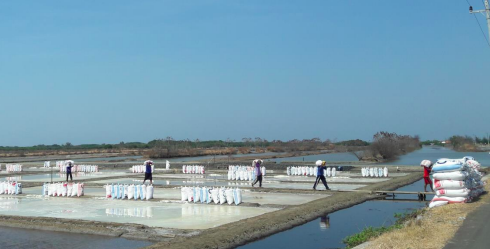3.3 Java and Bali Island Spatial Plan
<< The Integrated Coastal Zone Management (ICZM) for the Northern Coast of Central Java
<< Analysis of Coastal Spatial Plan
The Java and Bali Spatial plan was ratified as presidential regulation no 28 of 2012, in this plan a strategy is set for realizing the carrying capacity and adequate environmental carrying capacity, one of which is an increase in the area of protected areas to at least 30% of the total area of Java and Bali, by:
a. Maintaining an area that functions as a protection and rehabilitating a degraded protected area;
b. Controlling cultivation activities that have the potential to disrupt protected areas including the upstream part of river areas, protected forests, water catchments, and conservation areas;
c. Controlling changes in the designation and or function of forest areas.
In addition to the above strategies, the strategy for developing protected areas and cultivation is also mentioned, one of which is by developing the management of protected areas and cultivation areas through inter-regional cooperation for the sustainable use of natural resources.
In the discussion of protected areas, especially related to coastal boundaries, there is the need to control the use of space on coastal borders, river borders, and areas around lakes or reservoirs that have the potential to disrupt and or damage environmental functions. This is done by using environmental technology, as well as by developing natural structures in the form of types and density of plants and or artificial structures to prevent water damage on the north-south coast of Java and Bali.
Meanwhile, indications of zoning regulations for coastal boundaries include:
a. Controlling the use of space on the coastal border that has the potential to disturb and or damage the function of the coastal border by using environmental technology
b. Utilization of space for the development of natural structures in the form of types and density of plants and artificial structures on the coast to prevent abrasion or water damage
c. Utilization of space for the provision of green open space
d. Utilization of space for the construction of buildings that support coastal recreational activities and disaster monitoring
e. Application of provisions regarding prohibition of building construction other than supporting beach recreation and disaster monitoring
f. The application of provisions regarding the prohibition of all activities that can reduce the area, ecological value, and aesthetics of the area.
Reflection: In detail, the Spatial Plan for the islands of Java and Bali has taken into account environmental protection aspects. As one of the derivatives of the RTRWN, it is determined that an increase in the area of protected areas should be at least 30% of the total island area. The discussion of coastal areas emphasizes wanted control of the developments on the coastal border. The aim is to prevent disturbances and or damage to the function of the coastal border by using environmental technology, both natural and artificial, and also determining the activities that are allowed for the coastal area.

